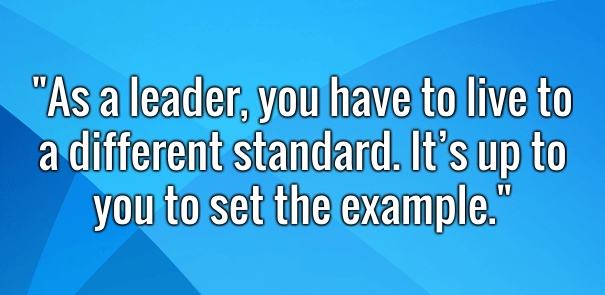When consulting with administrators, executives or leaders who have come up through the ranks, I often hear this theme: My subordinates don’t respect me because of my background. In other words, “My background is holding me back.”
The background issues could be
- Coming from a different industry than where they are leading
- Starting from humble beginnings with no real development.
- Going from front line to management (from one of us to one of them).
The “background holding me back” story seems reasonable but is mostly a myth. The fact is, background can only hold you back for so long. Once you adapt to the culture of the organization and learn the skills and mindsets of the position, you can develop the competency and confidence necessary to gain respect.
After due diligence and sincere effort, what really holds you back is not your background but the story you tell yourself about your background. This story becomes your leadership identity.
You have to consciously work on creating a new leadership identity. Otherwise, you continue to identify with your past, your previous industry or your humble beginnings. You still see yourself as a front-line employee and have not yet stepped into the role and title of leader. As a result, your focus is on what you are lacking, whether that be experience, education or status.
Although a great background can initially give you more status, and thus respect, the only thing really holding you back once you’ve paid your dues is how you are showing up today.
- How you speak
- The way your dress
- The way you express and live your values
- Your decision-making
- Your ability to build and sustain relationships
As a leader, you have to live to a different standard. It’s up to you to set the example. Instead, so many new leaders, especially if they have risen through the ranks or have had little leadership development, put too much effort into being liked and not enough effort into leading. As a result, they lower their standards in various ways:
- Avoiding difficult conversations
- Allowing substandard performance
- Joining in on office gossip
- Turning a blind eye to bullying
- Failing to make tough decisions
- Overlooking policy violations
The justification is often, “I have to meet them where they are.” If you are lowering yourself to “meet them where they are” instead of stepping into your executive presence to inspire, then you are losing respect. It’s the same principle you have heard over and over again, that your children need a parent, not a best friend. Your employees need a leader, not an enabler.
How do you know you are leading? It’s certainly not by making sure everyone likes you. In fact, part of earning your leadership wings is being able to handle criticism. You’ll hear things like, “Who does she think she is?” and “He thinks he’s above it all.”
Listen to any truth these words might contain and course-correct what you must. However be warned that these words are often meant to bring you down to a level where people feel comfortable and are not required to stretch.
To inspire others, you have to walk the razor’s edge of meeting them where they are while inspiring them to step up and be more. You can only do this when you successfully alter your leadership identity and elevate your executive presence.
Marlene Chism is a consultant, international speaker and the author of “Stop Workplace Drama” (Wiley 2011) and “No-Drama Leadership” (Bibliomotion 2015). Visit her at MarleneChism.com and StopWorkplaceDrama.com, and connect via LinkedIn, Facebook and Twitter.
If you enjoyed this article, join SmartBrief’s e-mail list for our daily newsletter on being a better, smarter leader.
